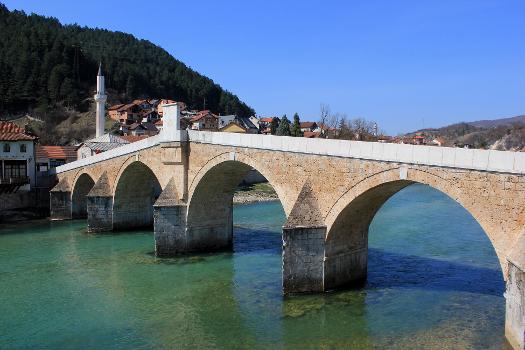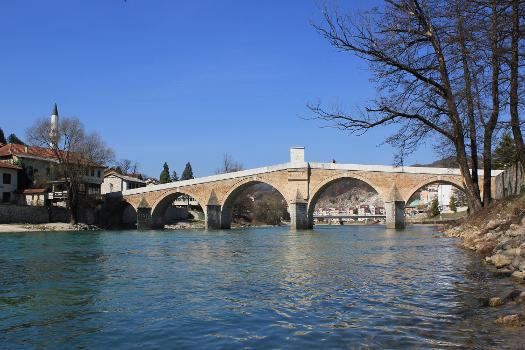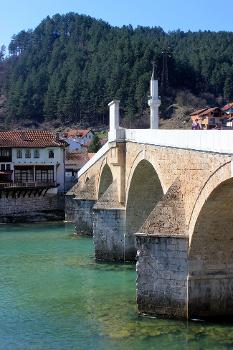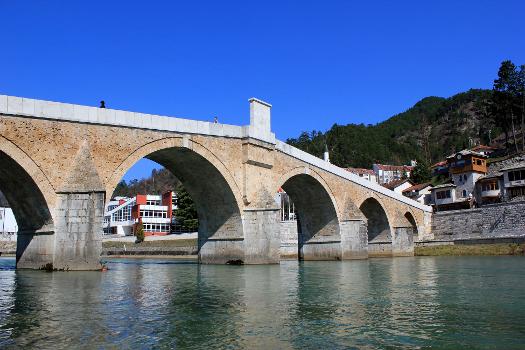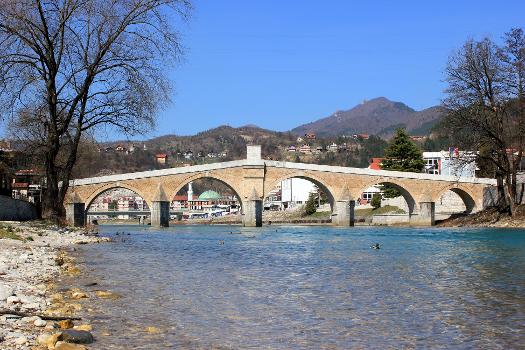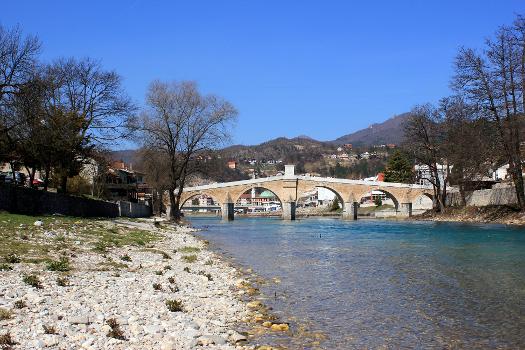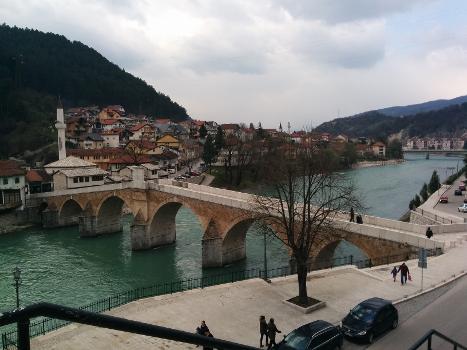General Information
Project Type
| Structure: |
Semi-circular arch bridge |
|---|---|
| Function / usage: |
Road bridge |
| Material: |
Masonry bridge |
| Plan view: |
Structurae Plus/Pro - Subscribe Now! |
| Architectural style: |
Ottoman |
| Material: |
Structurae Plus/Pro - Subscribe Now! |
Location
| Location: |
Konjic, Federation of Bosnia and Herzegovina, Bosnia and Herzegovina |
|---|---|
| Coordinates: | 43° 39' 3.85" N 17° 57' 45.85" E |
Technical Information
Dimensions
| span lengths | 8.29 m - 11.78 m - 13.52 m - 13.258 m - 11.424 m - 6.77 m | |
| number of spans | 6 | |
| pier 1 | width | 2.99 m |
| pier 2 | width | 3.04 m |
| pier 3 | width | 3.12 m |
| pier 4 | width | 3.07 m |
| pier 5 | width | 3.04 m |
Materials
| piers |
stone
|
|---|---|
| arches |
stone
|
Chronology
| March 1945 | The bridge is dynamited by the retreating German army, causing heavy damage to the arches while leaving the piers mostly intact. After the war, the bridge is temporarily repaired using steel beams to create a deck surface over the piers. |
|---|---|
| 2003 — 2009 | The bridge is restored to ist original appearance. |
Excerpt from Wikipedia
Stara Ćuprija (Bosnian:The Old Bridge) is a bridge spanning the Neretva River in the town of Konjic, Bosnia and Herzegovina. It is a significant example of Ottoman bridge architecture in the Balkans, and is a listed National Monument of Bosnia and Herzegovina.
History
The bridge was built between 1682 and 1683 by Ali-aga Hasečić (as commemorated by a stone plaque at the center span) atop six slightly-pointed stone arches. In March 1945, the bridge's deck was destroyed by explosive charges laid by the retreating German army. While the arches suffered heavy damage, all five piers survived, preserving the bridge's basic structural integrity and permitting eventual reconstruction.
After World War II, the Yugoslav government decided to temporarily repair the bridge for basic use, with a makeshift deck made of iron beams laid across the still-intact masonry piers supporting a one-lane tarmac for motorized vehicle traffic. This temporarily solution lasted for more than five decades, until after the Yugoslav Wars. The bridge was restored to its original appearance with European financial assistance between 2003 and 2009, and is once again a landmark of Ottoman architecture in Bosnia and Herzegovina.
Text imported from Wikipedia article "Stara Ćuprija" and modified on September 27, 2021 according to the CC-BY-SA 4.0 International license.
Participants
Currently there is no information available about persons or companies having participated in this project.
Relevant Web Sites
Relevant Publications
- (2009): Existing Historical Foundation System of Two Old Bridges from the Ottoman Period in Bosnia and Herzegovina. Presented at: Third International Congress on Construction History, Brandenburg University of Technology Cottbus, Germany , 20th-24th May 2009.
- About this
data sheet - Structure-ID
20051351 - Published on:
06/01/2010 - Last updated on:
15/01/2022

